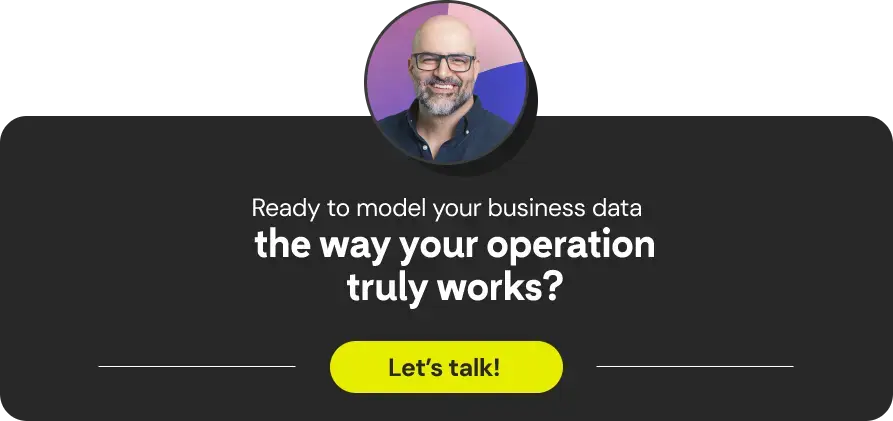
When and How to Use HubSpot Custom Objects (With Real-World Examples)
HubSpot is one of the most powerful and widely adopted CRM platforms on the market. But as your data architecture becomes more intricate, native objects —like Contacts, Companies, Deals, and Tickets— might no longer be enough.
This is where Custom Objects become a game-changer.
They allow businesses to model their unique data relationships and create advanced CRM workflows tailored to their operational needs.
Implementing them strategically can elevate your CRM from a standard tool into a tailored, scalable system that mirrors your business logic— and drives measurable growth.
Property vs. Object: What’s the Difference?
A property is a field inside a HubSpot object—think "number of employees" in a Company record. These work well for straightforward, one-to-one data points.
But what happens when you need to manage one-to-many or many-to-many relationships?
For example:
-
A single company with multiple active contracts.
-
One contact associated with several vehicles, subscriptions, or support cases.
-
A course with dozens of enrolled students and multiple instructors.
Standard properties can’t capture this level of complexity. You need a custom object in HubSpot —an entity with its own properties, logical associations, and automation potential.
When Should You Use a Custom Object?
Custom Objects are not for every use case. Their implementation requires thoughtful planning and a strong grasp of your business’s HubSpot CRM architecture.
Here are five signs you should consider them:
-
Complex Relationships: You need to model one-to-many or many-to-many interactions that can't be represented by standard objects alone.
-
Advanced Reporting Needs: You want to track and analyze data entities that currently live in spreadsheets or third-party systems.
-
Custom Automations: Your workflows need to trigger based on non-native entities, like vehicle registrations or implementation phases.
-
System Integrations: You're integrating with ERPs, legal tech, or logistics systems that require data mapping beyond default fields.
-
Scalability: Your current CRM model is slowing down operations or limiting growth due to structural constraints.
Industry Use Cases for Custom Objects
Different industries benefit from HubSpot custom objects in unique ways:
-
Legal: Track cases, court dates, attorneys, and outcomes, all linked to client records.
-
Real Estate: Manage listings, showings, potential buyers, and documentation within a unified schema.
-
Education: Model courses, track enrollments, assign instructors, and report on student progress.
-
Fintech: Handle financial contracts with multiple stakeholders and independent audit trails.
-
Logistics: Manage vehicles, delivery routes, maintenance records, and client assignments.
Best Practices for Designing HubSpot's Custom Objects
Before you jump into HubSpot’s custom object builder, take a step back and design your architecture —CRM data model. Here's what we recommend:
-
Map Your Data Model First: Use tools like Lucidchart or Figma to visualize object relationships and avoid structural missteps.
-
Name Carefully: Use intuitive, plural/singular naming conventions that are consistent and user-friendly.
-
Prioritize Smart Properties: Focus on fields that enable segmentation, filtering, and business logic automation.
-
Define Object Associations Clearly: Link custom objects to standard ones (contacts, companies, deals) using operational logic.
-
Test Before You Launch: Run experiments in a sandbox environment with dummy data.
-
Document Everything: Keep records of object definitions, field logic, and related automations to ensure maintainability and scalability.

Technical Considerations & Common Pitfalls
Custom Objects are powerful, but they come with their own set of limitations:
-
Missing Native Features: Out of the box, they don’t include "owner" fields or activity tracking—you’ll need to configure these manually.
-
No Public Forms Support: You can't currently use custom objects in native HubSpot forms. API workarounds or custom development are required.
-
Imports Require Precision: Bulk data loads must be structured perfectly, often requiring API assistance for high volumes.
-
Post-Launch Neglect: Without documentation and governance, custom objects can become black boxes that hinder scalability.
Making Custom Objects Work for You
To maximize the ROI of custom objects, follow three golden rules:
-
Train Your Teams: From sales to marketing to IT, make sure every stakeholder understands how these objects fit into your workflows.
-
Audit Quarterly: Revisit your object model to catch redundancies, data errors, or emerging requirements.
-
Report on Impact: Analyze how your new objects affect automation, reporting, and pipeline velocity.
At Triario, we help data-driven companies simplify complexity through scalable HubSpot CRM architecture. Our certified consultants specialize in building and maintaining custom object models that align with your business goals.
From technical integrations and API mapping to workflow design and advanced reporting, we make your CRM a growth engine, not a bottleneck.
FAQs About HubSpot Custom Objects
1. What is a HubSpot Custom Object?
A custom object is a user-defined entity in HubSpot that includes its own set of properties, associations, and behaviors. It allows businesses to model data structures that go beyond standard CRM objects like Contacts or Deals.
2. Can I use custom objects in workflows and automation?
Yes. Custom objects integrate with HubSpot workflows, enabling you to create advanced CRM automations based on unique entities, such as contracts, assets, or subscriptions.
3. Do I need a specific HubSpot plan to access custom objects?
Custom objects are available on HubSpot Enterprise-level plans or through the Operations Hub. Some advanced use cases may also require API access or custom development.
4. Why should I work with a certified HubSpot partner for custom objects?
Implementing custom objects requires strategic planning, data modeling, and technical configuration. At Triario, we help data-driven companies simplify complexity through scalable HubSpot CRM architecture, ensuring that your custom object implementation aligns with business goals and scales effectively over time.
Marketing Director at Triario. Social communicator with emphasis on journalism, digital marketing, and advertising. A frustrated Egyptologist, journalist at heart but dedicated to marketing and sales. She writes, sells, budgets, markets—nothing is too big for her! Always a nerd.
Triario's Blog
Subscribe to our Blog and don’t miss anything!
¿Te gusta nuestro contenido?
Publicamos nuevo contenido cada semana. Suscríbete aquí y mantente al día con las noticias más relevantes del marketing digital.





